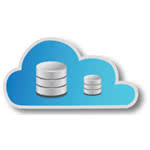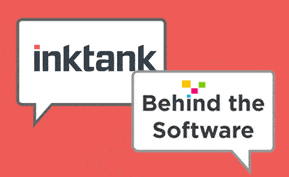Cloud Management
Cloud Storage
The Benefits of Cloud Databases

Cloud computing has been advancing in recent years as a powerful and flexible business computing platform for companies of all sizes, and it is increasingly becoming a platform for the database as well. Companies are seeking to leverage the flexibility of the cloud for their database using resources such as the Top 10 Cloud Hosting report. Databases can experience dramatic load expansions and contractions in very short time periods, making the cloud a logical resource. What’s important to consider from the buyer’s perspective is whether the database has been optimized for a cloud infrastructure or merely an on-premise database sitting in the cloud.
So what is the difference between a database that sits in the cloud versus a cloud database? It is simple: If your database can’t scale horizontally, in a dynamic fashion, you have a database that is sitting in the cloud, not a cloud database. The ability to add additional compute resources (including servers) as the demand on the database increases and to subsequently release those resources when the demand diminishes is what makes a database a cloud database.
So what does this mean for relational databases? Relational databases are the most commonly used data store for Web and IT applications. In fact, all relevant data indicates their usage is on the rise. The decades of R&D that have gone into relational database technology have centered on the ability to scale vertically and not scale horizontally. Many argue that relational databases are not a match for the cloud because they are built on a model where the entire database resides on a single host. This would suggest that as more enterprises pursue cloud computing, the use of relational databases would shrink. That’s not been the case.
We are now seeing a new class of databases that are part of a database revolution around cloud computing. Specific examples include NoSQL solutions such as MongoDB and Hadoop. These databases are built from the ground up to scale horizontally. They are a complete departure from the relational model. There is certainly room for NoSQL solutions where data ingestion and storage volumes are extremely large. However, in addition to this database revolution that is NoSQL, there is a database evolution also taking place. Traditional relational database are adding features that enable them to scale horizontally in dynamic fashion. As is often the case in the technology industry, I believe that the evolutionary approach will be more prevalent than the revolutionary approach. More specifically, we are going to see far more evolved relational databases deployed in the cloud than NoSQL solutions.
Let’s look at the top benefits you should be realizing from a relational database that is truly optimized for a cloud infrastructure:
Scalability and Elasticity
![]() Scalability is a key advantage of cloud infrastructures. One of the primary benefits of the cloud is being able to add and subtract server, power and network capacity on an as-needed basis.
Scalability is a key advantage of cloud infrastructures. One of the primary benefits of the cloud is being able to add and subtract server, power and network capacity on an as-needed basis.
With a cloud database optimized to take advantage automatically of the additional resources when needed, companies can ride out dramatic fluctuations in processing demand without a drop in quality of service or an emergency for the database administrator. Further, companies don’t have to maintain expensive hardware full-time just to accommodate periodic spikes in traffic.
Cost Savings
![]() Cloud database pricing runs the gamut: from free versions to pay-as-go to monthly subscriptions. IT budgets these days are tight and need to take costs into account. The traditional database licensing model, which most large database vendors use, prohibits users from fully taking advantage of running a database in the cloud.
Cloud database pricing runs the gamut: from free versions to pay-as-go to monthly subscriptions. IT budgets these days are tight and need to take costs into account. The traditional database licensing model, which most large database vendors use, prohibits users from fully taking advantage of running a database in the cloud.
A large upfront licensing fee coupled with a hefty annual maintenance fee and periodic audits does not fit well with the cloud paradigm. Cloud computing brings the promise of a pay as you go and pay for what you use model. Many database licensing models do not allow for this. Hence, their business terms makes them cloud unfriendly.
Ease of Use
![]() The cloud is supposed to make things easier, and help more individuals in the enterprise take control of their applications. Tasks like starting up a new database cluster and configuring it for load balancing used to be the domain of the database administrator (DBA).
The cloud is supposed to make things easier, and help more individuals in the enterprise take control of their applications. Tasks like starting up a new database cluster and configuring it for load balancing used to be the domain of the database administrator (DBA).
Cloud databases can feature tools that make setting up and managing the databases easier for a wider range of individuals within an organization. As a result, organizations do not need to spend as much time fine-tuning their database and can focus on other matters.
For most database vendors, the cloud has only meant a new delivery channel for the standard on-premise version of their products. That poses significant challenges and risks for end users trying to take advantage of cloud computing – many are unable to benefit from the real utility of the cloud because of limitations of the underlying database. But when built and optimized for a cloud deployment, a cloud database provides on-demand scalability and elasticity. In addition, a cloud database will limit users cost to what they actually use.
Postgres Plus Cloud Database for example, an enterprise-class database can be used to handle large workloads, has been optimized to take advantage what the cloud promises. It provides on-demand horizontal  scaling, easy provisioning and is optimized take advantage of each unique cloud environment it is deployed in. An example of such an optimization is using Amazon’s snapshotting technology for lighting fast backups when deployed in the Amazon Web Services environment. When considering a cloud database, look for a solution that delivers the benefits of the cloud, not just a database in the cloud.
scaling, easy provisioning and is optimized take advantage of each unique cloud environment it is deployed in. An example of such an optimization is using Amazon’s snapshotting technology for lighting fast backups when deployed in the Amazon Web Services environment. When considering a cloud database, look for a solution that delivers the benefits of the cloud, not just a database in the cloud.
Want to know more about Cloud Computing? For additional reading material such as articles, blogs and software reviews, visit Business-Software.com’s cloud computing resource page.






